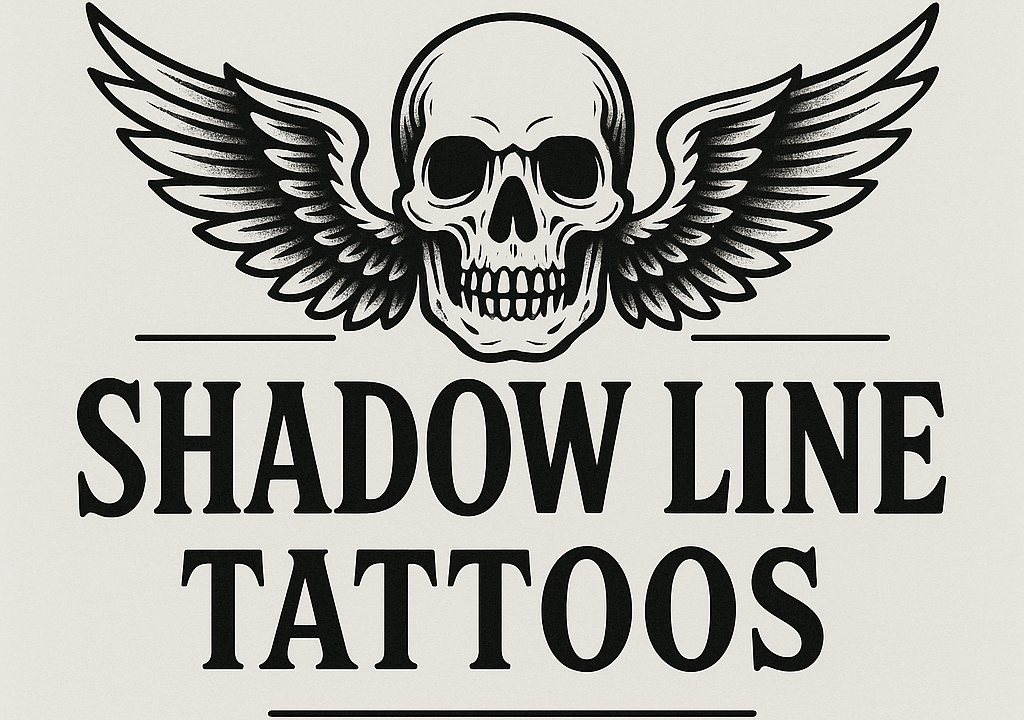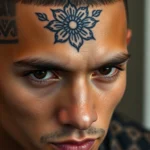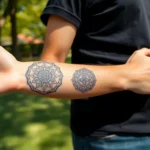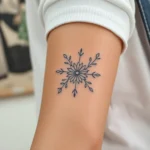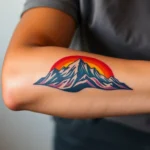We’ve all been there – staring at that lower back tattoo that once seemed like the perfect idea but now feels outdated or regrettable. Whether it’s a tribal design from the early 2000s or simply artwork that no longer represents who you are today, you’re not alone in wanting a fresh start.
Lower back cover-ups present unique opportunities and challenges that we’ll explore together. The area’s natural curves and generous canvas space make it ideal for stunning transformations, from delicate florals that gracefully follow your spine to bold geometric patterns that completely reimagine the space.
We’ll guide you through creative cover-up strategies that work specifically for lower back tattoos, helping you understand which designs provide the best coverage while creating something you’ll genuinely love. From understanding color theory to working with existing shapes, we’re here to help you transform that regrettable ink into your next favorite piece of body art.
Understanding Lower Back Tattoo Cover Up Basics
Before diving into design options, we need to establish the foundational elements that determine cover up success. Lower back tattoos present unique considerations that directly impact our approach and final results.
Assessing Your Existing Tattoo Size and Color
Size evaluation forms the cornerstone of effective cover up planning. We typically need a new design that’s 2-3 times larger than the original tattoo to ensure complete coverage. Measuring your existing tattoo’s dimensions helps us determine realistic design boundaries and placement options.
Color assessment requires careful examination of ink saturation and dominant hues. Dark colors like black, deep blue, and dark green create the biggest challenges since they show through lighter pigments. Faded tattoos generally offer more flexibility for cover up designs, while vibrant colors may limit our palette choices.
Age plays a crucial role in determining cover up feasibility. Older tattoos with blurred lines and faded pigments are easier to work with than fresh, crisp designs. We can often incorporate partially faded elements into new artwork rather than completely obscuring them.
Choosing the Right Artist for Cover Up Work
Portfolio review should focus specifically on cover up examples rather than general tattoo work. We recommend examining before and after photos that show similar color challenges and size requirements to your situation. Artists who specialize in cover ups understand color theory and design strategies that general tattooists might miss.
Consultation discussions must address realistic expectations and potential limitations. Experienced cover up artists will honestly assess whether your existing tattoo can be covered or if laser removal sessions might be necessary first. They’ll also explain design constraints and recommend styles that work best for your exact situation.
Technical expertise in layering and color blending separates cover up specialists from general tattoo artists. We look for artists who understand how different ink colors interact and can create designs that strategically use darker elements to mask problematic areas of the original tattoo.
Timeline and Healing Considerations
Initial healing typically takes 2-4 weeks for the outer skin layer to recover completely. Cover ups often require longer sessions than regular tattoos due to the additional ink density needed to mask existing designs. We schedule adequate time between sessions to allow proper healing.
Touch up appointments are frequently necessary for optimal coverage results. The lower back’s natural movement during daily activities can affect ink settling, making follow up sessions important for achieving uniform coverage. Most artists include one touch up session in their cover up pricing.
Multiple session planning may be required for complex cover ups or heavily saturated original tattoos. We often break large lower back cover ups into 2-3 sessions to minimize trauma to the skin and ensure each layer of ink heals properly before adding the next elements.
Large Floral Designs for Complete Coverage
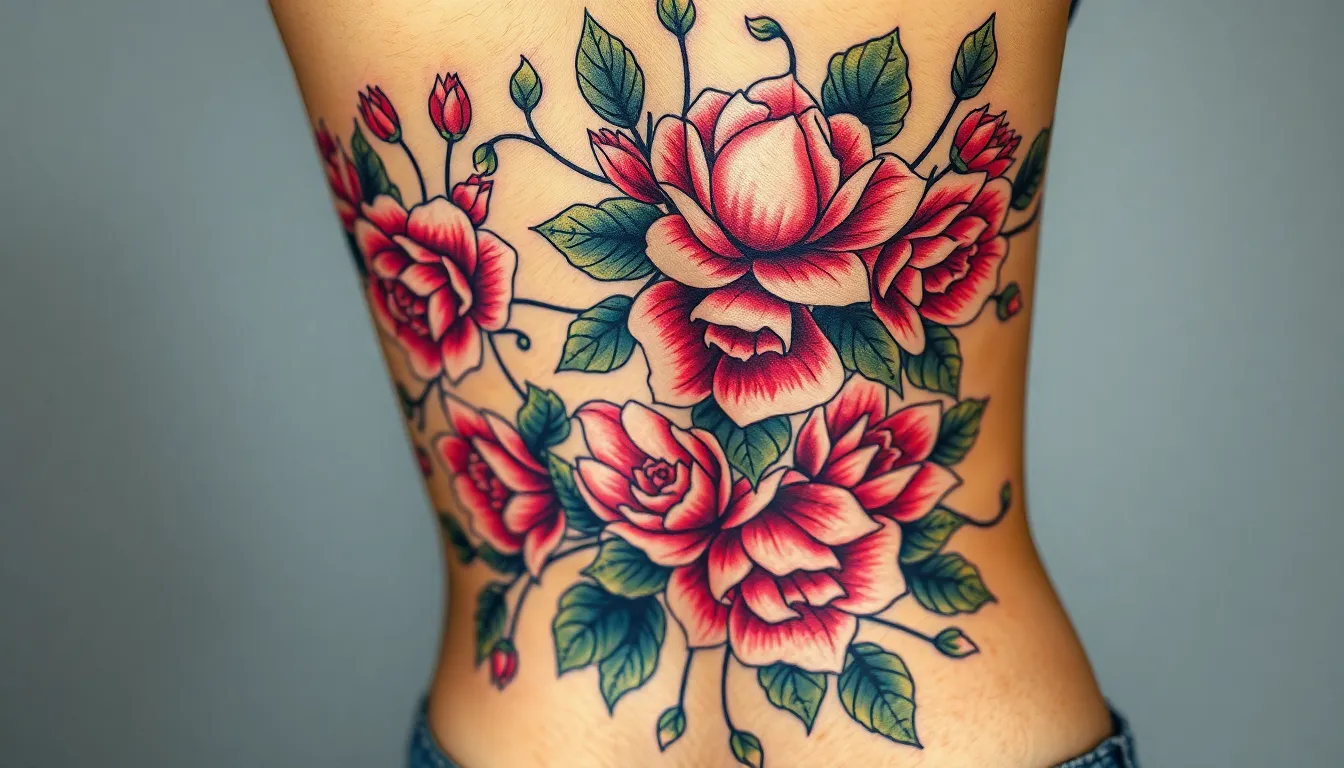
Large floral designs offer exceptional coverage potential for lower back tattoos while creating stunning artistic statements. We’ll explore three sophisticated approaches that transform unwanted ink into breathtaking botanical masterpieces.
Rose Garden Compositions
Rose bouquets provide strategic placement opportunities to cover problematic areas while maintaining natural flow across your lower back. We recommend incorporating lush, full-bloom roses with varying sizes to create dimensional coverage that completely masks underlying tattoos. Rose arches spanning the entire lower back deliver both comprehensive coverage and aesthetic appeal, creating a unified design that draws attention away from the original tattoo. These compositions work particularly well when artists layer different rose varieties like climbing roses, garden roses, and wild roses to add visual complexity and depth.
Lotus Flower Arrangements
Lotus blooms in various stages of opening create ever-changing coverage patterns that adapt to irregular tattoo shapes underneath. We’ve seen remarkable transformations using lotus flowers combined with water lilies to add depth and serenity while completely obscuring unwanted ink. These arrangements work exceptionally well because lotus petals naturally create broad coverage areas, and their symbolic meaning of rebirth aligns perfectly with the cover up journey. Artists can position larger lotus blooms over the densest parts of the original tattoo while using smaller buds and leaves to blend the edges seamlessly.
Botanical Vine Patterns
Vine and flower combinations weave through existing tattoo lines to create seamless coverage that feels organic and intentional. We recommend these designs for their versatility in adapting to any lower back tattoo shape or size. Leafy vines alone or with minimal flowers create natural, flowing patterns that cover unwanted ink without overwhelming the space with excessive detail. These botanical patterns excel at connecting different elements across the lower back, creating cohesive designs that transform the entire area into a unified piece of art.
Geometric and Mandala Cover Up Options
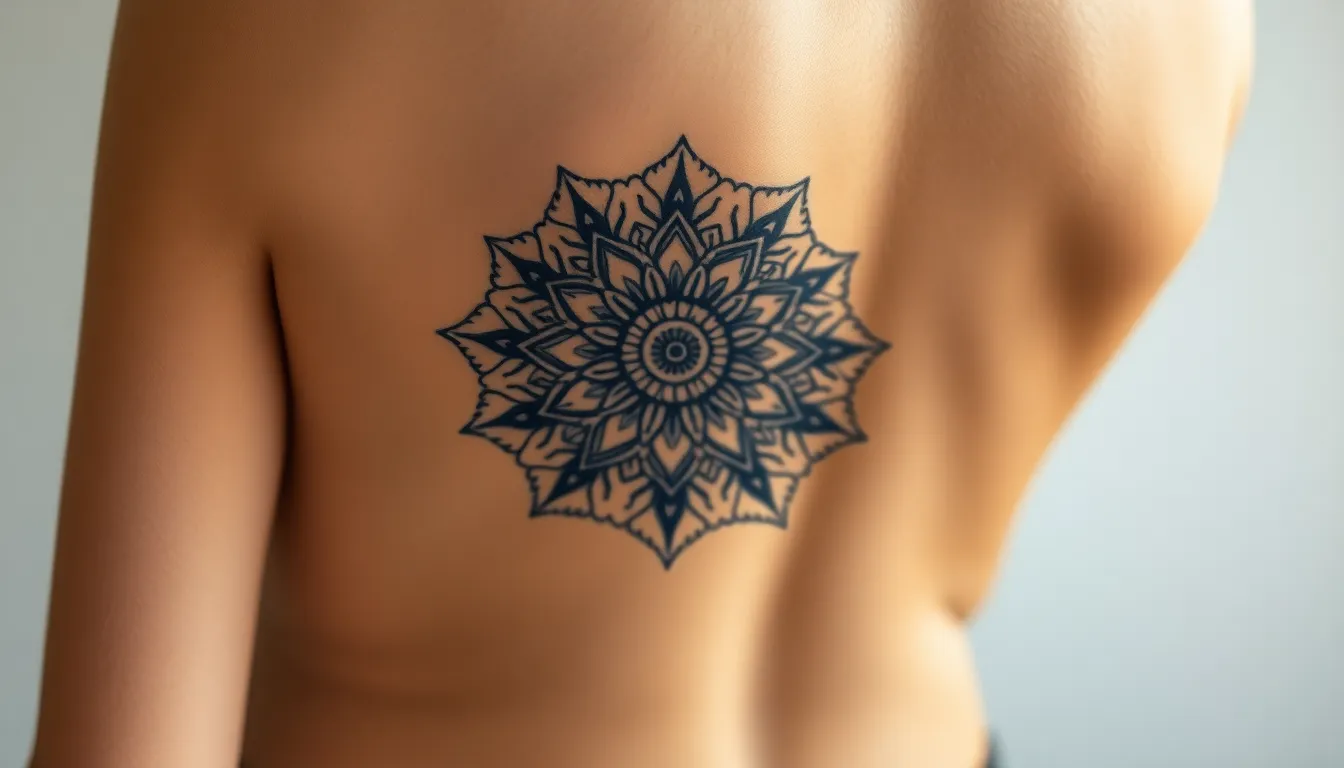
We’ve found that geometric patterns and spiritual designs offer some of the most versatile answers for lower back cover ups. These mathematically inspired approaches create powerful visual impact while providing excellent coverage potential.
Sacred Geometry Patterns
Sacred geometry patterns integrate spiritual and mathematical principles to create stunning cover up designs that completely transform unwanted ink. These designs typically feature triangles, circles, and hexagons arranged in precise formations that draw the eye away from original tattoos. We recommend these patterns because they naturally expand outward, allowing artists to strategically place geometric elements over problematic areas while maintaining visual balance.
Mathematical precision creates intricate themes that blend seamlessly with the body’s natural curves. Artists often incorporate multiple layers of geometric shapes, starting with larger foundational elements and adding smaller details that enhance coverage depth. These spiritual patterns carry meaningful symbolism while serving the practical purpose of complete tattoo transformation.
Intricate Mandala Designs
Mandalas excel at covering tattoos through their detailed, symmetrical patterns that can incorporate existing ink into the overall design structure. These circular masterpieces feature radiating patterns that naturally expand from a central point, making them perfect for covering irregularly shaped tattoos. We’ve seen artists successfully blend floral motifs, geometric shapes, and artistic elements within mandala frameworks to create seamless coverage.
Symmetrical patterns work exceptionally well on the lower back because they complement the area’s natural curves and provide balanced visual weight. Artists can customize mandala sizes and complexity levels to match exact coverage needs, ensuring that every element serves both aesthetic and practical purposes. The repetitive nature of mandala patterns helps unify disparate elements while creating cohesive, meaningful artwork.
Celtic Knot Variations
Celtic knot patterns feature interconnected loops and lines that can be customized to fit any shape or size requirement for lower back cover ups. These traditional designs offer cultural heritage and symbolism while providing excellent coverage through their continuous, flowing lines. We appreciate how artists can weave Celtic patterns around existing tattoo elements, incorporating them into the overall design rather than simply covering them.
Interconnected designs create visual movement that naturally guides the eye across the entire tattoo area. Artists often combine multiple knot variations within a single piece, using thicker lines for primary coverage and thinner details for refinement. The endless loop symbolism adds meaningful depth to the transformation while ensuring that every inch of unwanted ink becomes part of a beautiful, cohesive design.
Animal and Nature-Inspired Cover Ups
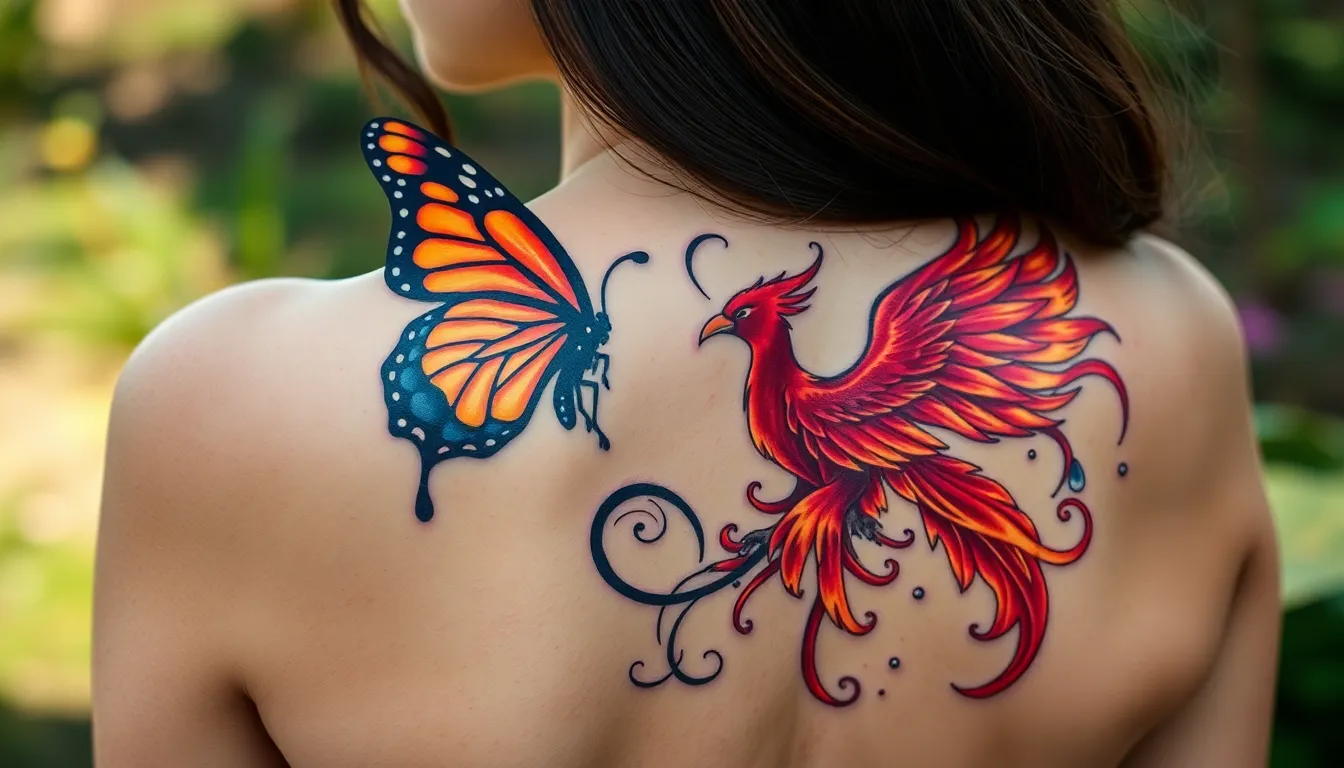
Moving beyond geometric patterns, we explore nature’s most powerful symbols that create meaningful transformations. These organic designs work exceptionally well on the lower back’s natural curves.
Butterfly and Moth Designs
Butterfly transformations offer versatile answers for smaller unwanted tattoos. We can design these winged creatures in various colors and patterns, making them adaptable to different tattoo sizes and shapes. Monarch butterflies work beautifully with their bold orange and black wings, while swallowtails provide elegant wingspan coverage.
Moth designs bring dramatic nighttime symbolism to your cover up transformation. We particularly recommend luna moths for their pale green coloring and distinctive tail extensions that help camouflage irregular tattoo edges. These nocturnal creatures carry powerful meanings of rebirth and intuition.
Wing positioning becomes crucial for effective coverage strategies. We typically spread the wings wide across the lower back to maximize concealment potential. Multiple butterflies can create a migration scene that naturally flows with your body’s contours.
Phoenix Rising Tattoos
Phoenix rising designs serve as powerful symbols of rebirth, perfect for covering larger unwanted tattoos. We can create these mythical birds in bold reds and oranges or subtle earth tones depending on your original tattoo’s darkness. The phoenix’s dramatic wingspan naturally accommodates wide tribal designs or text pieces.
Flame elements provide additional coverage opportunities around the main bird design. We incorporate swirling fire patterns that extend beyond the phoenix itself, creating organic shapes that blend seamlessly with existing ink. These flames can wrap around the lower back’s natural curve for comprehensive coverage.
Feather details offer intricate texture that helps break up solid tattoo areas. We layer individual feathers with varying opacity levels to gradually transition from the original tattoo to the new design. This technique works particularly well with faded or partially lasered tattoos.
Tree of Life Concepts
Tree designs without leaves effectively cover tribal or geometric patterns through their branching structure. We create bare trees that mirror the angular lines of existing tattoos, transforming harsh geometric shapes into organic branch patterns. These minimalist approaches work exceptionally well for black ink cover ups.
Root systems provide natural coverage for lower portions of unwanted tattoos. We extend intricate root networks that spread across the lower back area, creating natural boundaries that help define the new design. These underground elements can incorporate existing tattoo lines into their organic flow.
Seasonal variations allow for creative customization based on your original tattoo’s characteristics. We might add subtle cherry blossoms for spring themes or autumn leaves for warmer color palettes. Winter trees with snow dusting work beautifully over darker original tattoos, while summer trees with full foliage provide maximum coverage density.
Abstract and Artistic Cover Up Solutions
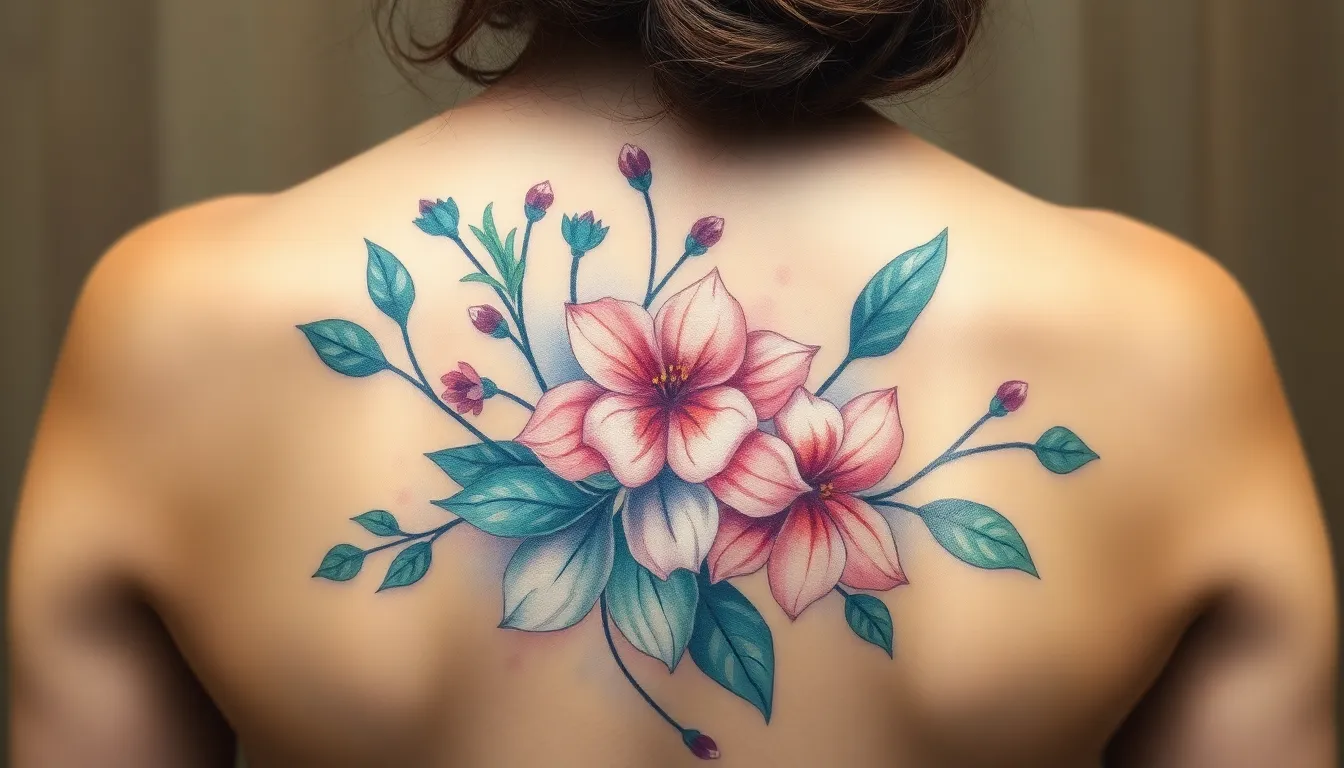
Abstract and artistic approaches offer some of the most creative possibilities for lower back cover ups. We’ll explore how these innovative techniques can transform your unwanted ink into stunning artistic statements.
Watercolor Splash Techniques
Watercolor splash techniques create a dreamy, ethereal effect that beautifully obscures existing tattoos through soft color blending. Artists apply ink in fluid, organic patterns that mimic watercolor painting, allowing colors to naturally flow and merge together. This method works exceptionally well for covering darker tattoos because the layered colors create depth and visual interest.
Combining watercolor effects with complementary elements like delicate flowers or flowing leaves enhances the overall aesthetic appeal. The technique’s organic nature means no two watercolor cover ups look identical, giving you a truly unique piece of art. Soft pastels work best for subtle coverage, while vibrant blues and purples provide dramatic transformation for more prominent original tattoos.
Tribal and Polynesian Patterns
Tribal and Polynesian patterns excel at covering unwanted tattoos through their bold lines and intricate geometric details. These designs create powerful visual impact by layering new, more vibrant patterns directly over existing ink. Dense black work and complex interconnected shapes effectively mask underlying tattoos while creating striking artistic statements.
Traditional Polynesian motifs carry deep cultural significance, featuring elements like ocean waves, mountains, and spiritual symbols. Bold line work in these patterns provides excellent coverage for faded or light colored original tattoos. But, these designs tend to be visually heavy and may not suit everyone’s aesthetic preferences, so careful consideration of your personal style is essential.
Japanese-Inspired Art Styles
Japanese-inspired art styles offer elegant sophistication through delicate lines and subtle color palettes perfect for understated cover ups. Cherry blossom branches provide graceful coverage with their flowing organic shapes and soft pink tones. Koi fish designs adapt beautifully to the lower back’s natural curves, symbolizing perseverance and transformation.
Traditional Japanese elements like bamboo, waves, and lotus flowers can be combined with abstract shapes to create unique cover up designs. These artistic approaches work particularly well for covering smaller tattoos or those with lighter colors. Subtle shading techniques in Japanese art create depth without overwhelming the design, making them ideal for clients seeking refined, culturally rich cover up answers.
Script and Quote Cover Up Transformations
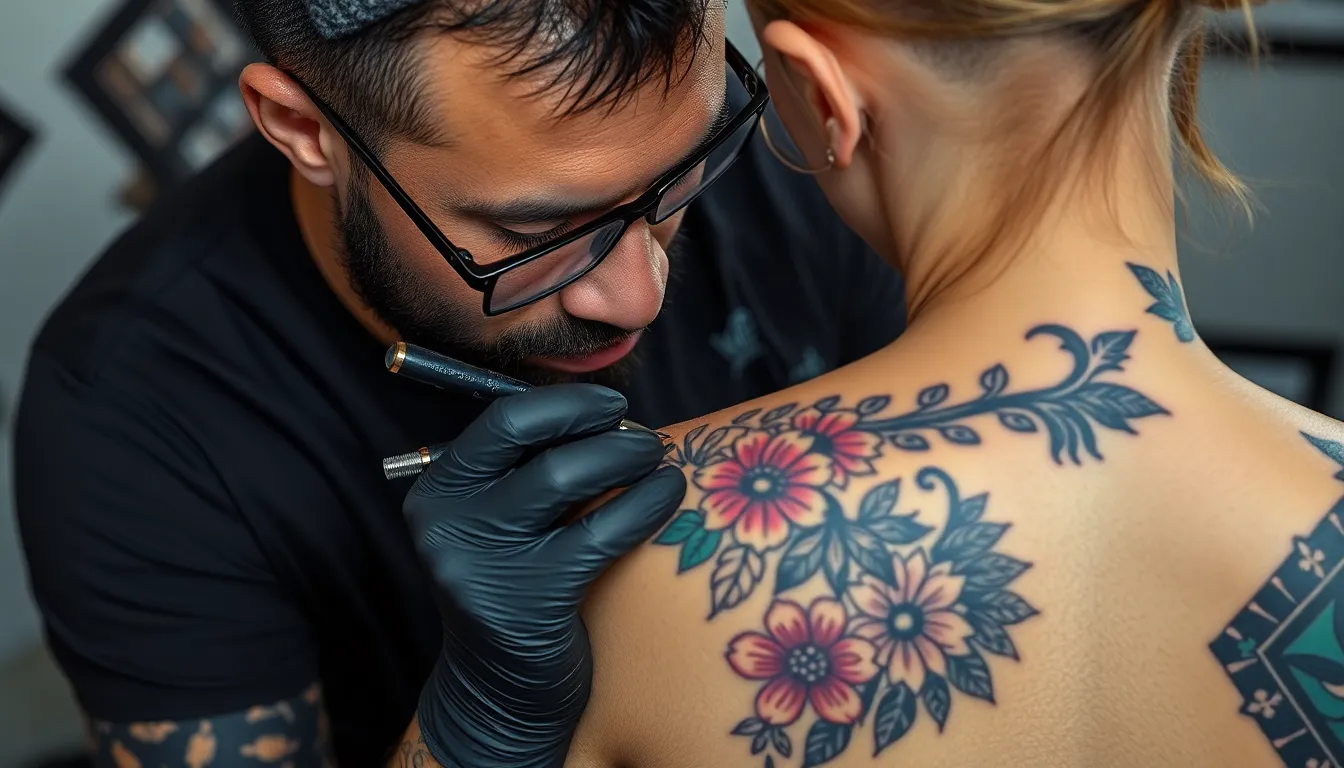
Transforming text-based tattoos presents unique opportunities for creative reinvention. We’ll explore how existing script and quotes can become integral parts of stunning new designs.
Incorporating Old Text Into New Designs
Integrating existing text with new symbols creates cohesive and meaningful transformations. We recommend combining old script with leafless tree designs, which offer a minimalist approach that allows the original tattoo to fade naturally into the background. Floral elements like roses or peonies can strategically overlap portions of unwanted text while maintaining readability of meaningful words you want to preserve.
Geometric shapes provide another effective method for text integration. We’ve seen excellent results when triangular or diamond patterns intersect with existing letters, creating visual breaks that transform the overall composition. Mandala elements work particularly well for this technique, as their intricate patterns can incorporate text into radiating designs that feel intentional rather than corrective.
Decorative Lettering Overlays
Calligraphic fonts add artistic flair while effectively concealing unwanted portions of existing text. We suggest using decorative scripts that complement your original tattoo’s style, creating layers that enhance rather than compete with the existing design. Typography mixing offers another sophisticated approach, where different font weights and styles create new focal points across the lower back area.
Ornamental borders and flourishes can frame existing text while adding decorative elements that draw attention away from less desirable portions. We often recommend incorporating swirls, filigree patterns, or botanical accents that extend beyond the original tattoo boundaries, creating a more substantial and visually appealing composition.
Meaningful Quote Integrations
Placing new quotes strategically around existing designs creates powerful personal statements while providing effective coverage. We’ve found that integrating quotes with symbolic elements like infinity signs, feathers, or compass roses creates depth and significance in the transformed design. These combinations allow the new artwork to tell a complete story rather than simply hiding unwanted ink.
Using quotes as framing elements gives old tattoos fresh context and renewed meaning. We recommend selecting text that complements your current life philosophy, creating a design that feels authentic to who you are today. Professional consultation remains crucial for these complex transformations, as experienced artists can suggest placement and font choices that maximize both coverage and visual impact.
Color Considerations for Lower Back Cover Ups
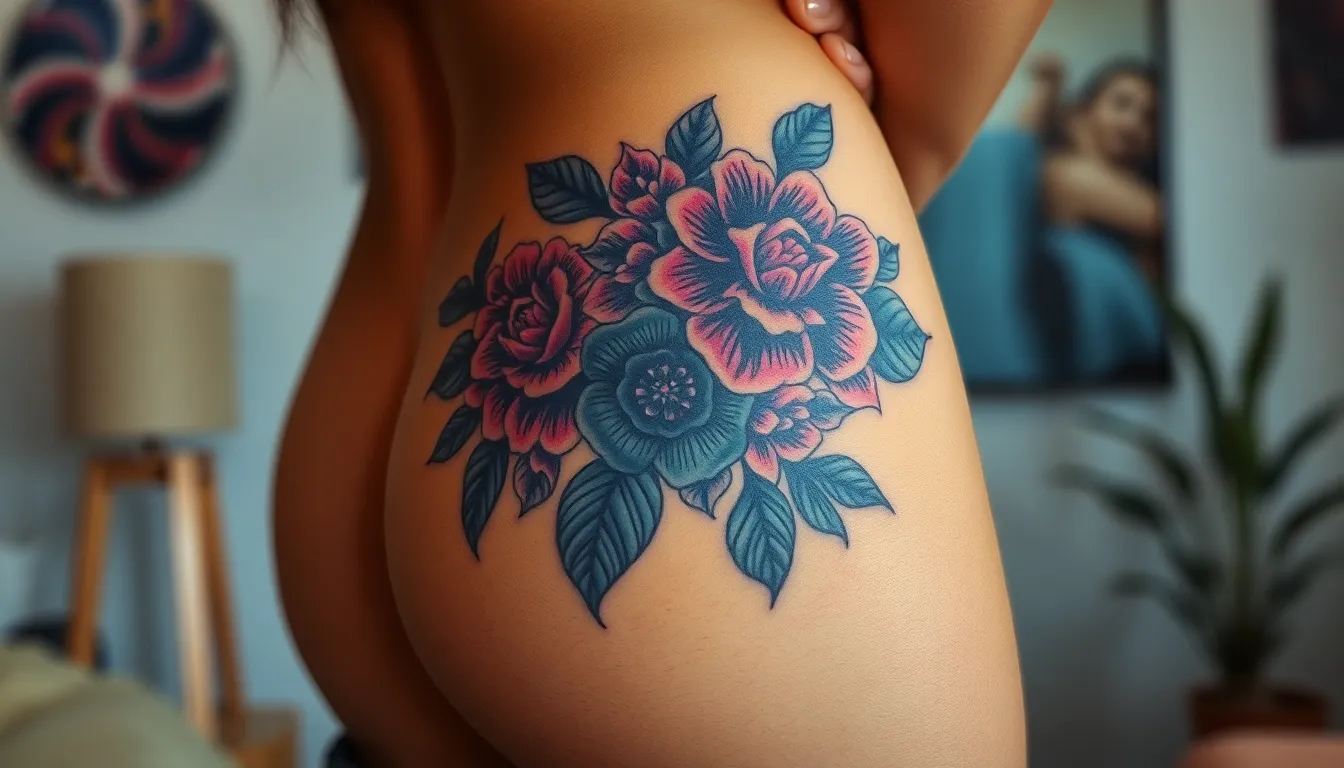
Selecting the right colors forms the foundation of any successful lower back cover up. Strategic color choices can transform unwanted ink into stunning artwork while ensuring complete concealment.
Using Dark Colors Effectively
Dark colors serve as the backbone of effective tattoo cover ups, providing the opacity needed to conceal existing designs. Black, brown, deep blue, purple, magenta, and dark green excel at overpowering original ink, making previous tattoos virtually invisible. These rich hues create seamless transitions by blending naturally with existing pigments rather than fighting against them.
Artists strategically layer darker shades to build depth and dimension throughout cover up designs. Dense coverage with these colors ensures that underlying tattoos won’t show through over time, even as the new ink settles and heals. Heavy greens work particularly well for botanical designs, filling dark spaces while creating realistic foliage effects.
Darker tones also provide versatility in design execution, allowing artists to incorporate shadows, outlines, and solid fill areas without worrying about transparency issues. This flexibility enables more complex compositions that completely transform the lower back area.
Incorporating Bright Accent Colors
Bright accent colors breathe life into cover up designs without compromising coverage effectiveness. High saturated reds create striking focal points, especially in floral compositions like roses where vibrant petals contrast beautifully against darker stems and leaves. These bold accents draw attention to the new artwork while diverting focus from any remnants of the original tattoo.
Strategic placement of bright elements enhances the overall visual impact of cover up pieces. Lighter, white containing greens work excellently as highlights in botanical designs, creating realistic light reflection effects. Yellow and orange accents can simulate sunlight or add warmth to nature inspired compositions.
Vibrant colors also add personal meaning and emotional connection to cover up tattoos, transforming what was once a source of regret into a celebration of personal growth and artistic expression.
Black and Gray Versus Color Options
Black and gray cover ups offer timeless elegance and superior concealment capabilities for challenging original tattoos. These monochromatic approaches blend seamlessly with existing dark ink, creating realistic textures and detailed shading that completely mask underlying designs. Grayscale work provides excellent versatility for portraiture, realistic animals, and intricate geometric patterns.
Full color cover ups deliver vibrant, eye catching results that transform the entire aesthetic of the lower back area. Colors like red, blue, and green can be carefully selected to complement individual skin tones while adding personal significance to the design. Colorful options work particularly well for floral arrangements, nature scenes, and artistic watercolor effects.
Hybrid approaches combining both techniques often yield the most successful results, using black and gray foundations with selective color accents. This strategy maximizes coverage while maintaining visual interest and personal expression throughout the final design.
Placement and Size Optimization Strategies
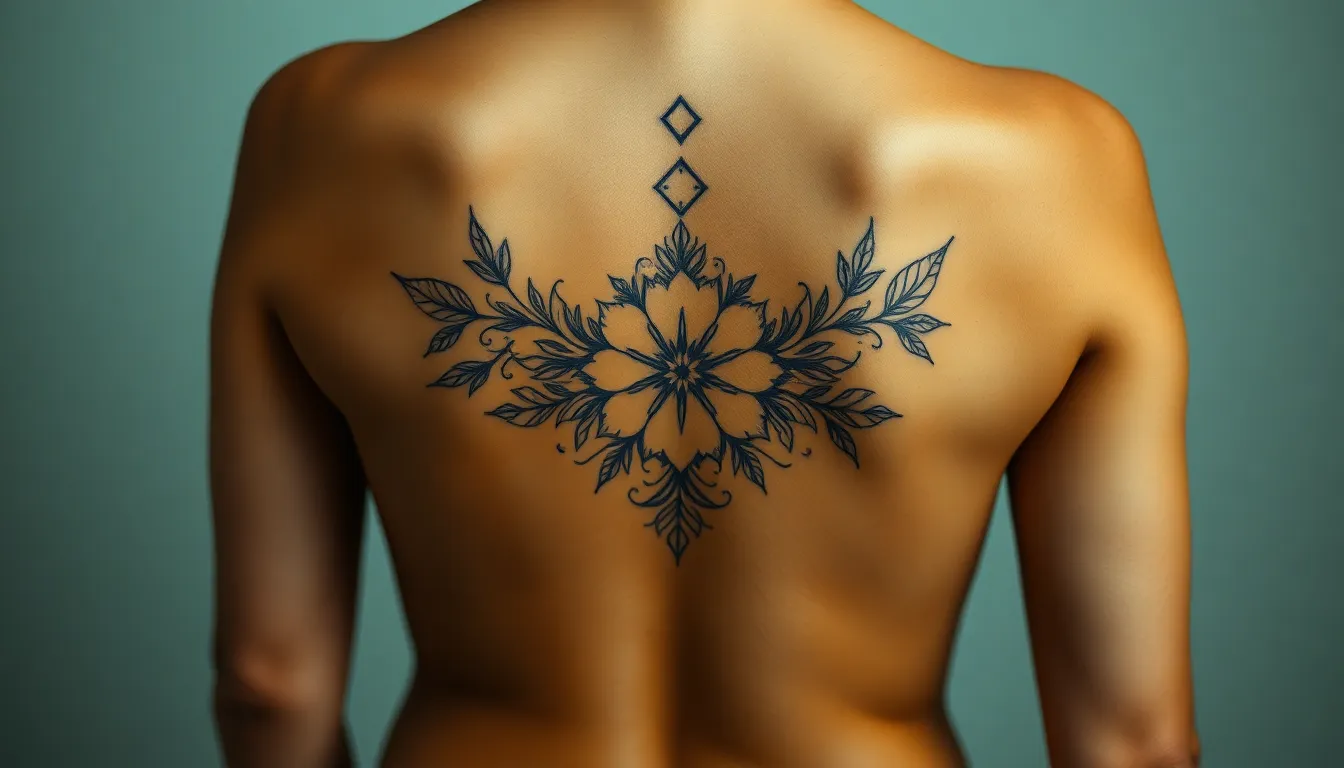
Strategic placement and proper sizing form the foundation of successful lower back cover-ups. We’ll guide you through the essential techniques that ensure your new tattoo naturally complements your body’s contours while providing complete coverage.
Working With Lower Back Anatomy
Understanding the lower back’s natural curvature is crucial for creating designs that look authentic and flow seamlessly with your body. The curved area requires exact design approaches that follow anatomical contours rather than fighting against them.
Curved designs work exceptionally well in this region, with floral patterns, geometric shapes, and organic motifs naturally adapting to the spine’s gentle arch. We recommend choosing elements that embrace these natural lines rather than rigid, straight-edged designs that can appear awkward or forced.
Symmetrical balance plays a vital role in lower back placements, as the area naturally draws attention to proportional relationships. Designs should maintain visual equilibrium across the spine’s centerline, creating harmony that enhances rather than disrupts your body’s natural symmetry.
Extending Coverage Areas When Needed
Large existing tattoos often require extended design coverage that goes beyond the original tattoo boundaries. We’ve found that extending new designs into surrounding skin areas creates seamless blending that makes the cover-up appear intentional rather than corrective.
Layering elements becomes essential when dealing with particularly dark or dense original tattoos. Adding multiple design layers, such as foliage backgrounds, geometric patterns, or decorative borders, provides the depth needed to completely obscure unwanted ink while creating visual interest.
Strategic expansion techniques help integrate the new tattoo with your body’s natural proportions. Consider how the extended design will interact with clothing lines, other tattoos, and your overall aesthetic goals to ensure long-term satisfaction with the placement.
Balancing Proportions and Scale
Proportional relationships between the existing tattoo and new design determine the cover-up’s visual success. We typically recommend new designs that are 2-3 times larger than the original tattoo to ensure complete coverage while maintaining aesthetic appeal.
Scale adaptation requires careful consideration of both the lower back’s available space and your body’s overall proportions. Larger designs can overwhelm smaller frames, while undersized cover-ups may fail to provide adequate coverage or visual impact.
Design elements should be sized appropriately for the lower back’s curvature and available skin space. We suggest working with your artist to create mockups that show how different scales will appear on your exact body type, ensuring the final result enhances rather than dominates your natural silhouette.
Before and After Care for Cover Up Success
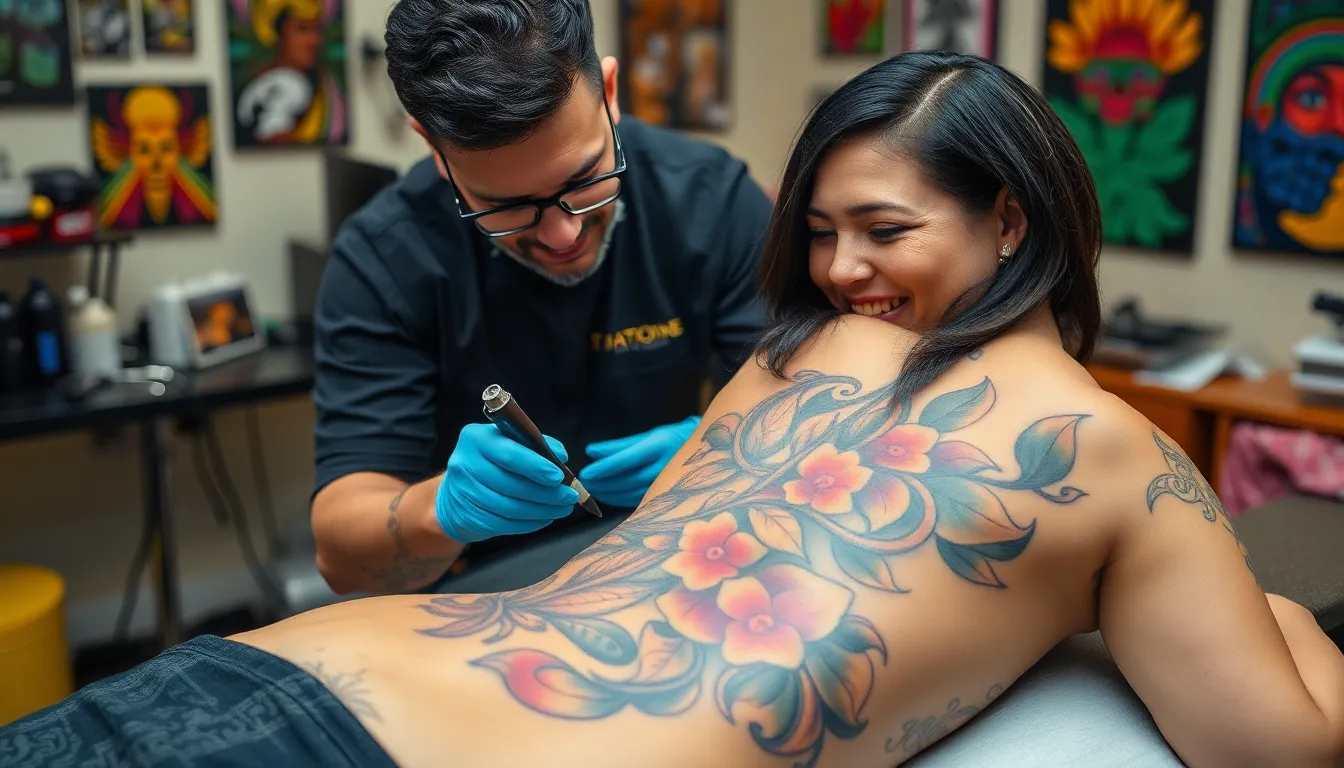
Proper preparation and aftercare are crucial for achieving optimal results with your lower back tattoo cover up. We’ll guide you through the essential steps to ensure your transformation is successful and long-lasting.
Pre-Treatment Preparation Steps
Schedule a professional consultation to assess your existing tattoo’s size, color density, and skin condition. Professional tattoo artists can evaluate the original design and recommend the most effective cover up approach based on your exact needs.
Avoid sun exposure and tanning beds for at least two weeks before your appointment. Sun damaged skin can complicate the tattooing process and affect healing, making it essential to protect the area from UV rays.
Stay hydrated and maintain healthy skin leading up to your session. We recommend drinking plenty of water and avoiding alcohol or blood thinning medications 24 to 48 hours before your appointment to minimize bleeding and improve ink retention.
Consider partial laser removal for particularly dark or dense tattoos that may limit cover up options. Initial lightening treatments can expand your design possibilities and create better coverage outcomes for complex transformations.
Post-Tattoo Healing Guidelines
Keep your new tattoo clean using mild soap and lukewarm water during the initial healing phase. Gentle cleansing twice daily helps prevent infection while allowing your cover up to heal properly without irritation.
Apply a thin layer of fragrance free ointment as directed by your tattoo artist. Quality aftercare products support the healing process and protect your investment during the critical first few weeks.
Resist the urge to touch, pick, or scratch your healing tattoo. Natural scab formation and peeling are normal parts of the healing process that shouldn’t be disturbed to maintain optimal color retention.
Protect from direct sunlight and avoid swimming until your tattoo is completely healed. Water exposure and UV rays can cause fading, infection, or other complications during the vulnerable healing period.
Long-Term Maintenance Tips
Moisturize regularly with unscented lotion to keep your skin supple and your cover up tattoo vibrant. Well hydrated skin maintains better color saturation and prevents premature fading over time.
Apply broad spectrum sunscreen with SPF 30 or higher whenever your lower back will be exposed to sunlight. UV protection is essential for preventing color degradation and maintaining the visual impact of your cover up design.
Schedule periodic touch up appointments as recommended by your tattoo artist to maintain color clarity and coverage effectiveness. Regular maintenance ensures your cover up continues to completely conceal the original tattoo.
Maintain overall skin health through proper hydration, balanced nutrition, and healthy lifestyle choices. Good skin condition supports tattoo longevity and helps preserve the artistic integrity of your cover up transformation.
Conclusion
Transforming an unwanted lower back tattoo into stunning new artwork is entirely achievable with the right approach and professional guidance. We’ve explored many creative options from intricate florals and geometric patterns to meaningful script integrations and nature-inspired designs.
Remember that successful cover-ups require careful planning – from choosing darker colors for proper concealment to selecting designs that complement your body’s natural curves. The investment in a skilled artist who specializes in cover-up work will make all the difference in achieving results you’ll love for years to come.
Your lower back tattoo doesn’t have to remain a source of regret. With proper preparation effective design choices and committed aftercare you can turn that unwanted ink into a beautiful masterpiece that truly represents who you are today.
Frequently Asked Questions
How much larger does a cover-up tattoo need to be than the original?
A cover-up tattoo typically needs to be 2-3 times larger than the original tattoo to achieve complete coverage. This size increase is necessary to ensure the new design effectively conceals all traces of the existing ink while maintaining proper proportions and visual appeal.
What colors work best for covering up lower back tattoos?
Dark colors like black, brown, and deep blue are most effective for covering existing tattoos. These colors provide the opacity needed to conceal unwanted ink. Bright accent colors can enhance the design but shouldn’t be relied upon for primary coverage.
How long does it take for a cover-up tattoo to heal?
Initial healing for a cover-up tattoo takes 2-4 weeks. However, complete healing may take longer, and touch-up appointments are often necessary for optimal results. Complex cover-ups may require multiple sessions spaced apart to ensure proper healing.
What design styles work best for lower back cover-ups?
Large floral designs, geometric patterns, mandalas, and nature-inspired themes work exceptionally well for lower back cover-ups. These styles can adapt to the area’s natural curves while providing adequate coverage for existing tattoos.
Can text-based tattoos be effectively covered up?
Yes, text-based tattoos can be transformed through creative integration with new designs. Existing script can be incorporated into floral elements, geometric patterns, or decorative borders. Professional consultation is crucial for these complex transformations to ensure optimal coverage.
How do I choose the right artist for my cover-up?
Look for artists with specific experience in cover-up work by reviewing their portfolios. Schedule consultations to discuss realistic expectations and assess their understanding of color theory and design strategies needed for successful transformations.
What should I do to prepare for a cover-up tattoo?
Schedule a professional consultation first, avoid sun exposure before your appointment, and maintain healthy skin. Discuss design options thoroughly with your artist and ensure you understand the healing process and aftercare requirements.
How do I maintain my cover-up tattoo long-term?
Regular moisturizing, consistent sunscreen use, and avoiding prolonged sun exposure will preserve your tattoo’s vibrancy. Schedule touch-ups as needed and follow your artist’s specific aftercare instructions to maintain the integrity of the cover-up design.
